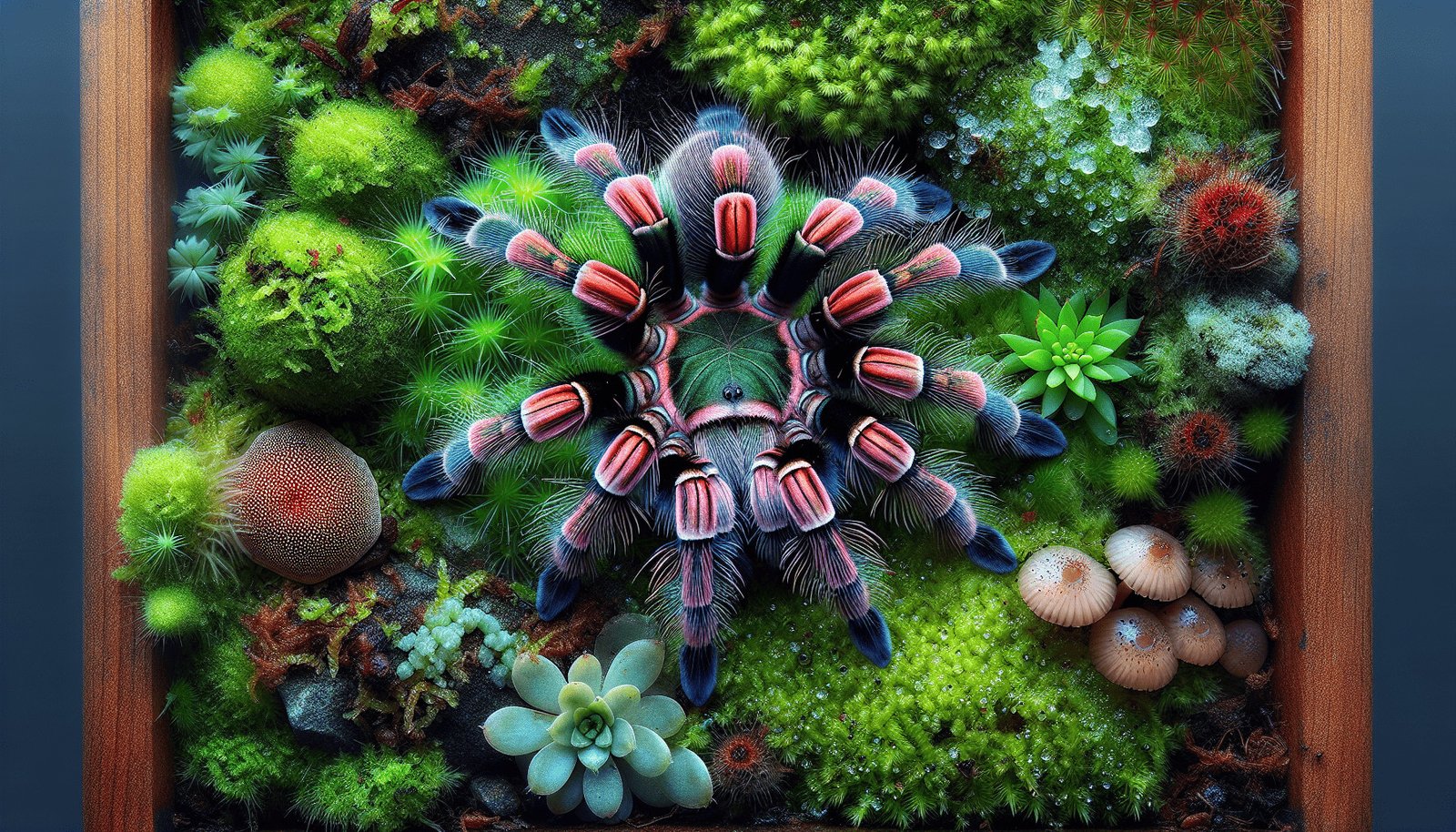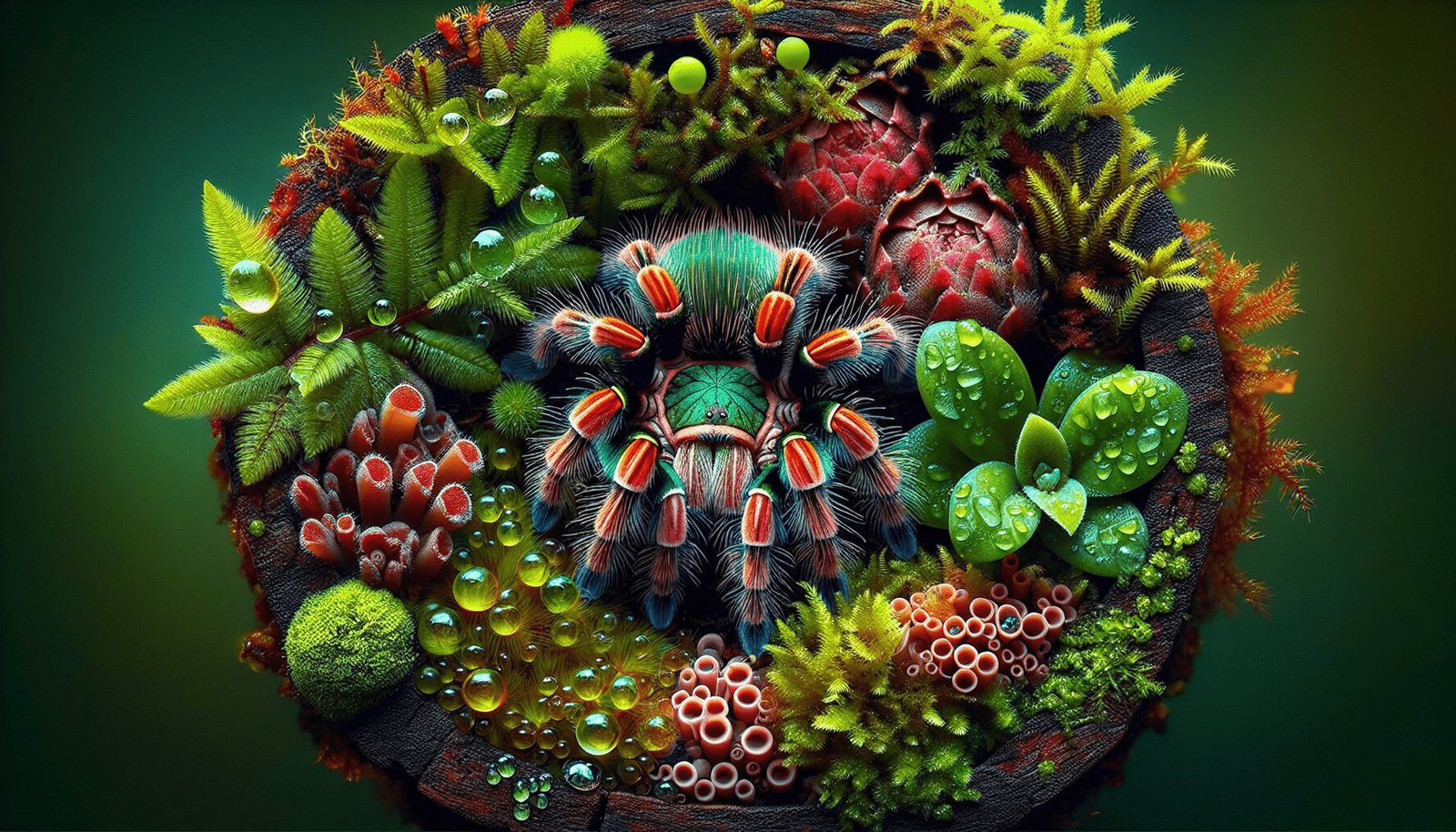Have you ever wondered whether tarantulas can thrive in a habitat that employs live microorganisms to assist with cleaning? This intriguing topic lies at the intersection of pet care and natural ecosystems, sparking curiosity about how we can create healthier environments for these fascinating creatures.
Understanding how to maintain a clean and healthy enclosure for your tarantula is essential, not only for the spider’s well-being but also for the ease of care. As pet owners, we strive to mimic an animal’s natural environment as closely as possible. Therefore, the idea of using microorganisms as part of the cleaning process aligns well with creating a more natural habitat. Let’s explore how this concept might benefit both you and your eight-legged companion.
The Fascinating World of Tarantulas
What Makes Tarantulas Unique?
Tarantulas are popular pets because of their relatively low-maintenance needs and unique appeal. Unlike other common pets, tarantulas have specific habitat requirements largely influenced by their natural environment. These arachnids can be found across different regions, each species having adaptations suited to their particular climate and habitat.
Natural Habitat and Behavior
In the wild, tarantulas live in a variety of environments, ranging from rainforests to deserts. They can be burrowers, arboreal, or ground dwellers, each requiring unique setups that mimic these natural conditions. These creatures are nocturnal hunters, relying on their keen senses to capture prey. Understanding these behaviors is crucial when attempting to design a suitable living space within your home.
Importance of Clean Enclosures
Keeping a tarantula enclosure clean isn’t just about aesthetics; it’s vital to the spider’s health. A dirty enclosure can lead to mold growth, disease, and stress. Tarantulas are sensitive to their environments, and an untidy habitat might disrupt their normal behaviors or lead to health issues. Traditionally, this involves removing uneaten food, waste, and regularly cleaning the substrate.

Live Microorganisms as Cleaners: An Overview
What Are Live Microorganisms?
Live microorganisms—including bacteria, fungi, and other microbes—exist everywhere in nature. These tiny beings play crucial roles in ecosystems, breaking down dead matter and recycling nutrients. In the context of pet enclosures, they can potentially help decompose waste and maintain a healthier environment.
Biological Cleaning Explained
Biological cleaning, in terms of using live microorganisms, involves introducing specific types of microbes into the tarantula’s enclosure. These microbes are tasked with breaking down organic waste, thereby reducing both odor and the presence of harmful pathogens. It’s a biological approach to cleaning, shifting some maintenance duties from you to nature’s decomposers.

The Potential Benefits for Tarantula Enclosures
Reduced Maintenance Effort
One of the most appealing benefits of using live microorganisms is the reduction in maintenance efforts. These organisms can continuously break down waste products, meaning less frequent substrate changes and cleaning sessions for you. This can be a considerable advantage, especially if you have multiple enclosures to maintain.
Healthier Living Conditions
Microorganisms can help create a balance within the enclosure, potentially reducing the risk of pathogens that might cause harm to your tarantula. They can also help maintain optimal humidity levels by aiding in the natural decomposition process, which is crucial for the well-being of certain tarantula species.
Closer to Natural Habitats
Using live microorganisms can make the tarantula’s environment more akin to its natural habitat. In the wild, these arachnids live in environments teeming with microorganisms that aid in maintaining ecological balance. Thus, incorporating them into your spider’s enclosure can help replicate this natural system.

Possible Challenges and Considerations
Understanding the Balance
Introducing live microorganisms is not without its challenges. Striking the right balance of microorganisms is crucial, as an overabundance can lead to other problems, such as undesired mold growth. Understanding how to maintain this balance is key to successfully using biological cleaning methods.
Species Compatibility
Not all tarantula species will thrive in environments that utilize microorganisms for cleaning. Species that require dry conditions might not benefit from the presence of decomposing microbes, which often thrive in moist environments. It’s important to research and understand the needs of your tarantula species before introducing this cleaning method.
Monitoring and Adjustment
Using microorganisms requires regular monitoring to ensure that they are functioning correctly and not causing harm. You might need to adjust the microbial balance occasionally, which can involve adding or removing certain types. This requires some basic knowledge of microbial ecology and the needs of your specific tarantula.

How to Implement Microorganisms in Your Tarantula’s Enclosure
Selecting the Right Microorganisms
Choosing the right type of microorganisms is the first step. Commonly used organisms include beneficial bacteria and certain fungi species. These microbes should be harmless to your tarantula and effective at breaking down waste materials.
Setting Up the Environment
Creating an environment where these microorganisms can thrive involves mimicking conditions found in natural ecosystems. This may include maintaining appropriate humidity and temperature levels. You may also need to introduce specific substrates that support microbial life.
Regular Maintenance and Monitoring
While microorganisms can handle much of the cleaning, regular monitoring is still required. Check for signs of mold or other imbalances and make necessary adjustments. Regularly observe your tarantula for any signs of stress or health issues.

Conclusion: Is This the Right Choice for You?
Using live microorganisms for cleaning might not be suitable for every tarantula enthusiast, but it offers an enticing option for many. It can closely emulate a natural ecosystem, potentially reducing your cleaning workload and promoting a healthier environment for your arachnid companion.
Ultimately, your choice should be guided by careful research into both your tarantula species’ needs and the dynamics of microorganism-based cleaning systems. With the right balance and proper monitoring, this innovative method could enhance your pet-keeping experience, providing both you and your tarantula a more natural and satisfying living arrangement.
So, what do you think? Could this be a strategy you’d consider for your tarantula’s habitat? Your curiosity and dedication to providing the best care might just lead you to an enriching new approach to tarantula husbandry.